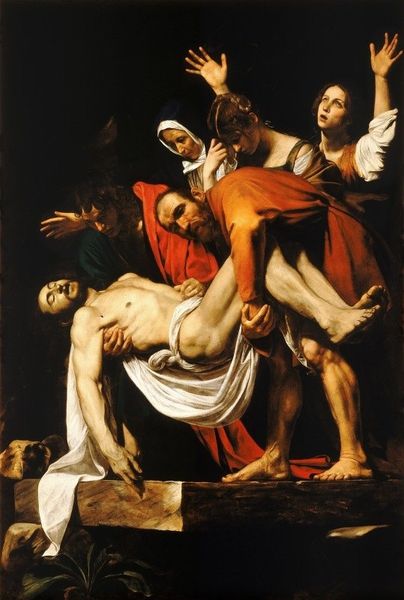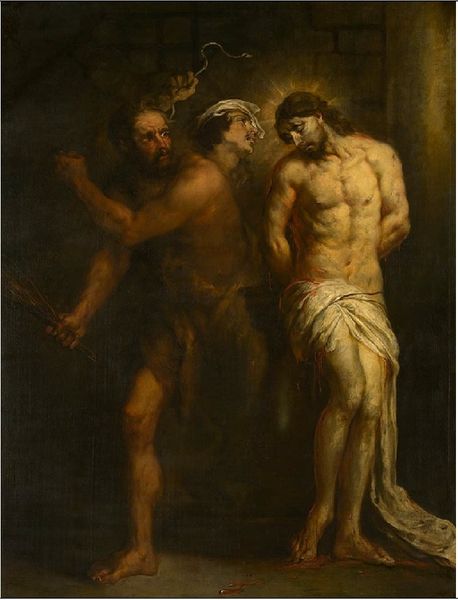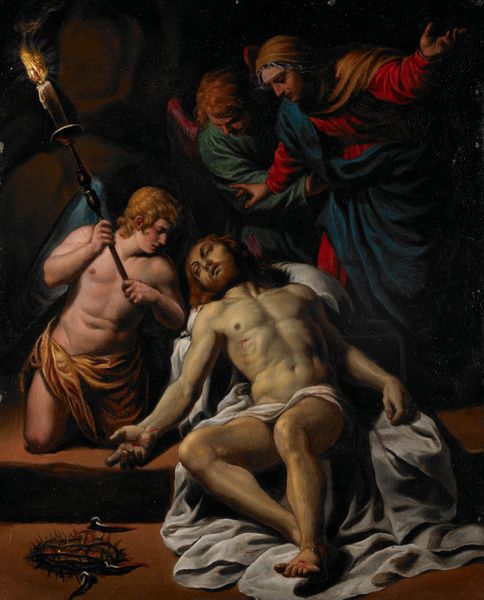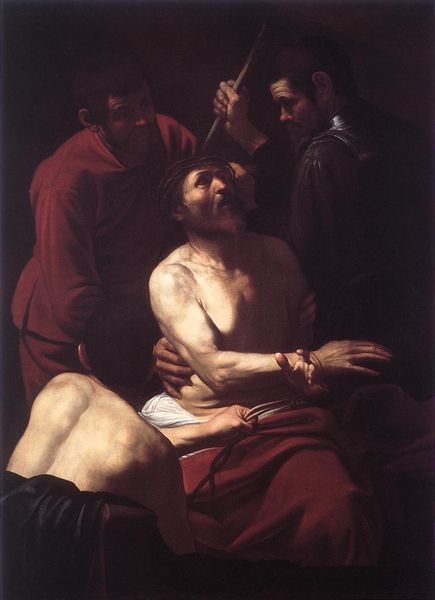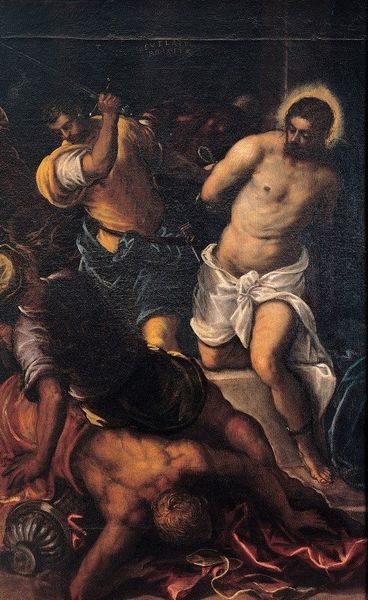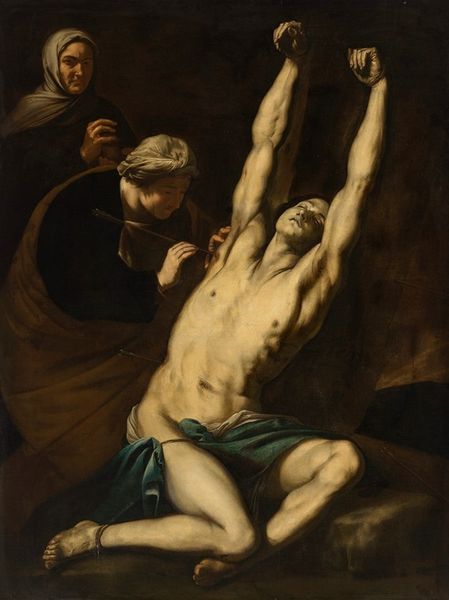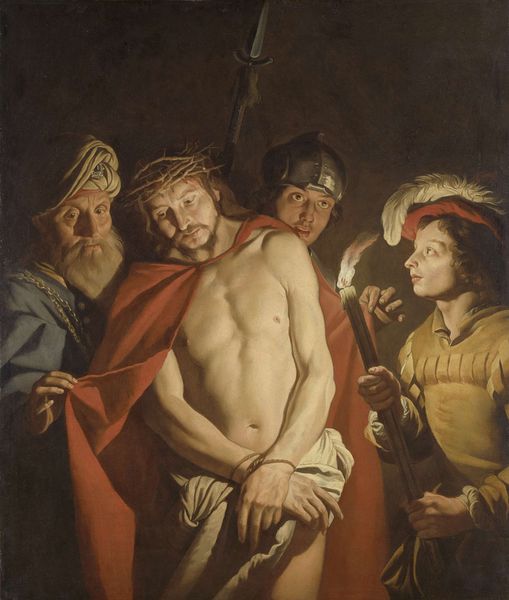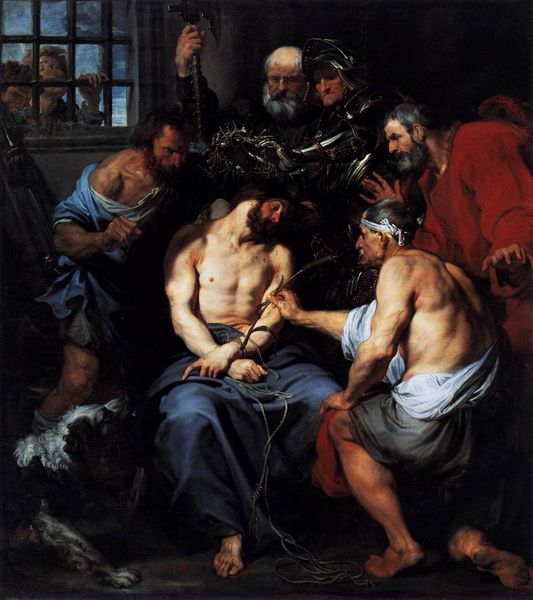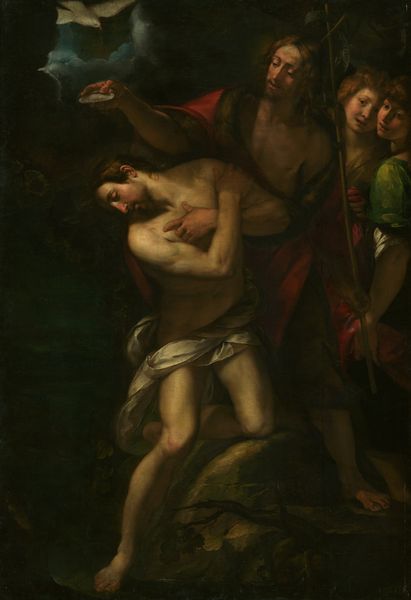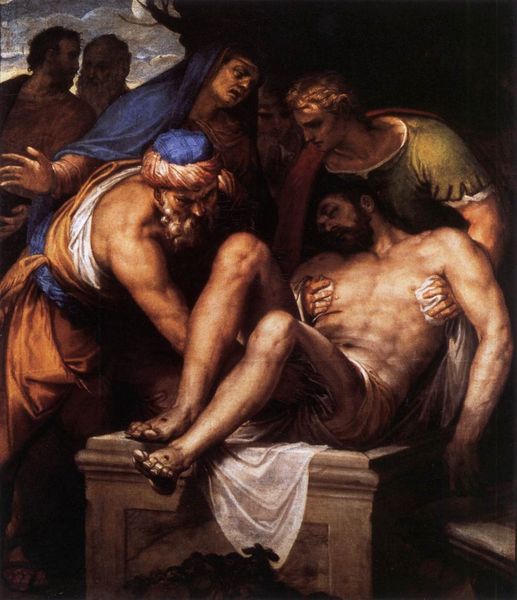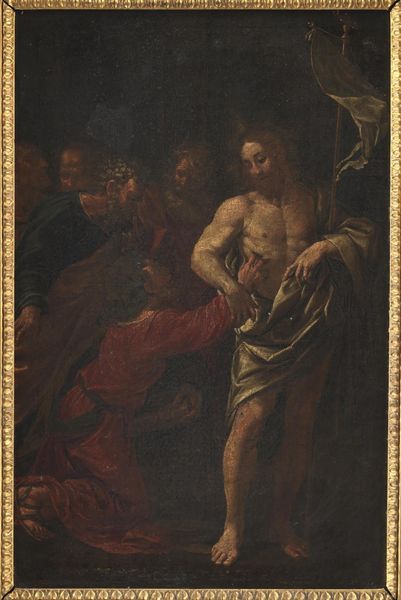
painting, oil-paint
#
portrait
#
baroque
#
painting
#
oil-paint
#
figuration
#
jesus-christ
#
chiaroscuro
#
christianity
#
human
#
history-painting
#
italian-renaissance
#
nude
#
realism
#
christ
Dimensions: 390 x 260 cm
Copyright: Public domain
Editor: So here we have Caravaggio’s “Flagellation of Christ” from 1607, oil on canvas, and what strikes me immediately is just how brutally raw it feels, like witnessing something intensely private and painful. What do you see when you look at this work? Curator: I see Caravaggio diving headfirst into the depths of human suffering. It's not just a historical depiction; it's an exploration of torment. The way he uses light, this almost violent chiaroscuro, it's as though the divine is battling the darkness within the human soul, wouldn't you say? How do you feel about the dramatic contrasts? Editor: Absolutely. The light isolates Christ, emphasizing his vulnerability, and the dark shadows seem to swallow the tormentors, dehumanizing them almost. Is that intentional, this lack of individual identity in the figures enacting the flagellation? Curator: Precisely. By obscuring their faces, Caravaggio is asking us to consider a wider context of universal cruelty. And perhaps, on a more intimate level, the blurred line between victim and perpetrator within us all. Caravaggio always held a certain cynicism regarding mankind, his world and even his painting was very dramatic, filled with a heavy chiaroscuro and realistic characters, almost rough characters taken directly from the streets, like it happened here. Editor: That’s a really interesting point, and one I hadn't considered. I was too caught up in the immediate violence of the scene. Curator: That's the beauty of art, isn't it? It mirrors us, allowing us to explore and reflect the very depths of who we are! Editor: Well, I’ll definitely be sitting with that thought for a while. Thanks for the fresh perspective.
Comments
No comments
Be the first to comment and join the conversation on the ultimate creative platform.
